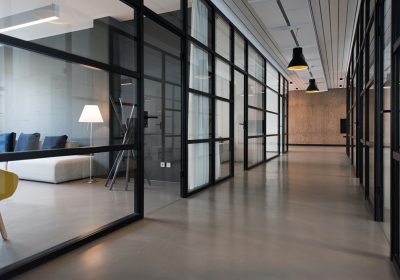As investors, some may not know what a HUD loan is, but it is important to understand its impact on a select commercial real estate (CRE) investment. Having a HUD-insured loan can mitigate risk, provide attractive loan terms and overall help ensure the longevity of the project. In this article, we’ll dig into what a HUD loan is and its importance to a CRE investment.
Understand this HUD doesn’t just insure loans for affordable housing developments; they also insure for market-rate multifamily development projects. These construction loans are officially referred to as 221(d)(4) loans and they provide some of the most competitive terms a developer(investor) can find, including:
- Competitive fixed rates
- 40-year term amortization
- Loan amounts up to 85% of the project cost
- Non-recourse financing
HUD is extremely risk-averse and has an extensive vetting process (hence why the right financial consultant is imperative) that can deter many sponsors from applying. This can be attributed to:
- Tedious Screening Process: HUD 221(d)(4) loans are not readily available to most projects or sponsor teams, and proposed projects must go through an extensive pre-review process and the project must be well-positioned with an established team in place to execute. The process is advertised as taking 7 to 10 months to be approved, but it can take much longer to actually close a loan; in some cases up to two years.
- Interest Rate Uncertainty: Sponsors do not know the interest rate they are locking in for 40 years until 30 days before closing. A 50 bps swing in rates can be a meaningful difference in how much equity they need. However, sponsors are often willing to take this risk due to the low benchmark interest rates of HUD loans and that, once they do lock a rate, they are now fixed for 40 years.
- Selectivity: HUD only loans to approved sponsors/developers. Further, HUD will not loan to sponsors with troubled HUD track records–one strike and you’re out. If a developer is showing their 4th HUD deal, that means they are performing on all three previous deals. Similarly, HUD requires a bonded contractor and HUD-experienced management team to supervise daily operations of the project. Therefore, the sponsor will be required to partner with HUD-approved and reputable construction, development, and management teams to facilitate the development and lease-up of their properties.
- Mortgage Insurance Premiums (“MIP”): Just as is the case with an FHA home mortgage, a borrower on a HUD 221(d)(4) construction loan must pay a mortgage insurance premium. The premium is 0.65% per annum for market-rate properties but can go as low as 0.25% if the borrower is able to obtain a green MIP reduction by incorporating energy efficiency improvements to the project.
- Prevailing Wage Requirements: Prevailing wage is the rate that contractors must offer their employees when doing business with a government agency. This wage rate is almost always higher than standard wage rates, even as much as 5 – 20% higher depending on location. Since over half of total construction costs are born from labor costs, this means total construction costs could increase by 2.5% – 10%.
- Bi-annual Cash Flow Distributions: Unlike a conventional loan that gives borrowers more flexibility in how they distribute cash flow, HUD limits distributions to twice per year and assesses the health of the property prior to approving each distribution. Investors should understand that the developer has less flexibility in issuing distributions to limited partners.
HUD requires a greater amount of reserves in comparison to a conventional loan (both interest and operating reserves during lease-up) to decrease the likelihood of default. HUD underwrites and evaluates projects using stringent criteria, and due to this outlook, HUD requires owners to carry additional cash in the deal. For example, HUD requires 12 months of debt service payments to be held escrow versus six months for most conventional lenders.
HUD loans, unlike most bank loans, are primarily asset-based, meaning that HUD scrutinizes the property location, the pro forma rents, expenses, and the development team to ensure its communities are successful and achievable. There are many hoops that experienced sponsors will jump through in order to obtain a highly sought-after HUD loan. Ultimately, having a HUD insured project means you are working with the right person with a proven track record that has taken additional precautions to improve the probability of the success of their project.
As with any program, your success is not attempting to gain this financing on your own. What could take months or a loss of the project is at risk. Is HUD a viable option for your project? Let’s evaluate that together. We can simplify the process and the work.



